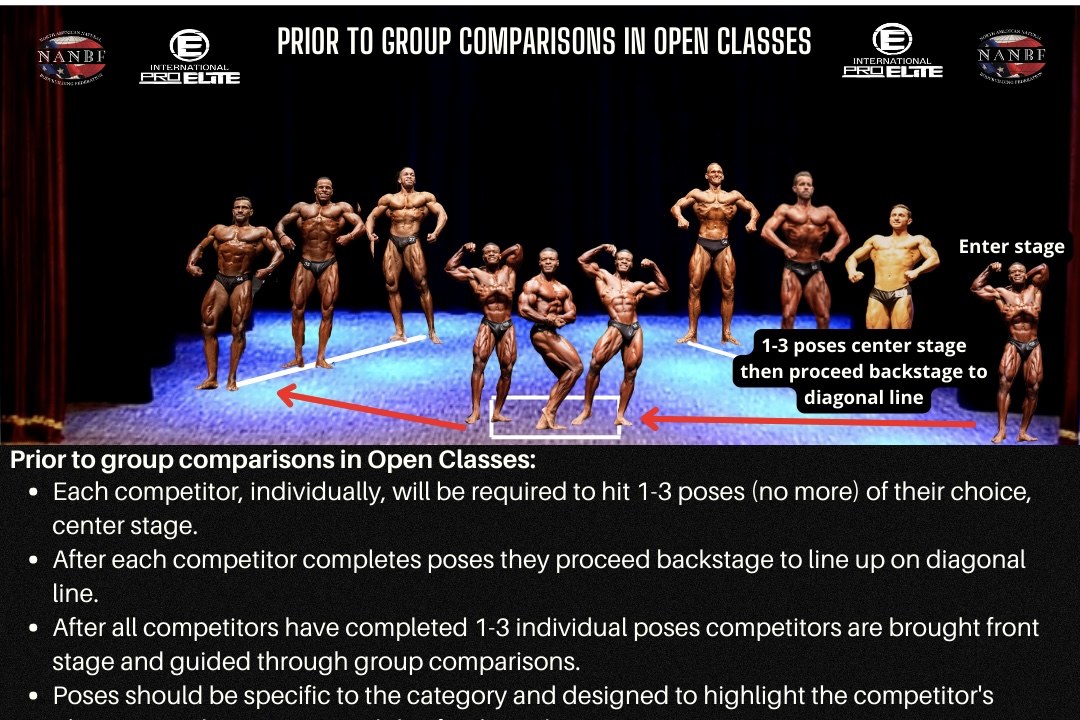
|
IPE Pro Classic |





| 7 judges are required for Pro events. | |
| Each judge takes all criteria for a category into account and assigns one overall score for each contestant in the form of rank during the group comparison rounds. | |
| A highest and lowest rank for each competitor is dropped as a safeguard against human error and/or bias, whether intentional or on a subconscious level. | |
| The remaining judges' placements are summed, and the competitor with the lowest sum total receives 1st place in the class. Second lowest sum receives 2nd place, and so on. | |
| In cases of a tie, competitors ranked higher by the majority of all judges are awarded the higher placements. |